I am designing a Reverse Polarity Protection circuit for a project by using an n-channel MOSFET. A basic schematic is shown here. I've added an RC filter so that the voltage on the Gate pin changes slowly. This is done because I need the circuit to be able to conduct under a reverse polarity condition for a short period of time, but only if the MOSFET is already on at the time that the reverse polarity condition occurs. This means that if no voltage is applied (the battery is disconnected) and then the battery becomes connected in reverse, then the circuit should not conduct at all.
I have tested this circuit and it works properly, using a 100K-ohm resistor in series with the Gate and a 0.1uF capacitor in parallel with the Gate-Source pins of the MOSFET.
Moving forward, I'd like to use only one component for the RC circuit. I believe that this can be done using a larger resistor and utilizing the intrinsic Gate-Source Capacitance of the NMOS. But, my concern and my question here is the following:
Is there reason to keep the resistance on the Gate pin low? I have had a hard time finding info on this, but in Stephen Collings answer to the following question he mentions that if the resistor is too large, we can run into "noise immunity issues." How can I slow down the switch time of a MOSFET?
Can anyone point me toward more info on this, or advise me on how to set the limit for resistance values? A limit on the resistance will force me to try finding an NMOS with a high enough Gate-Source capacitance.
Thanks for the help.
